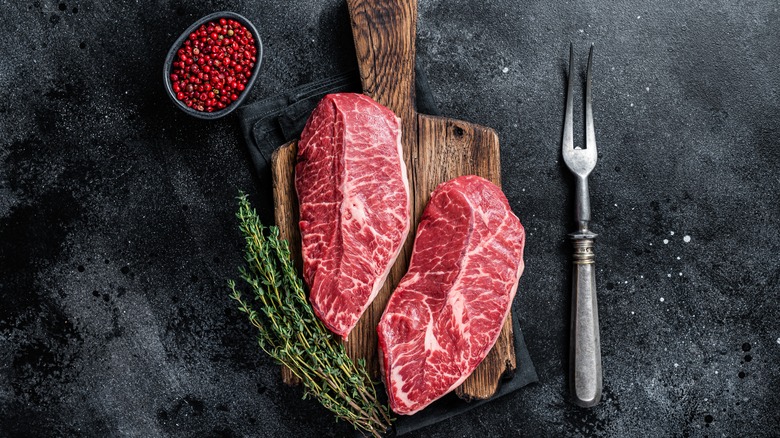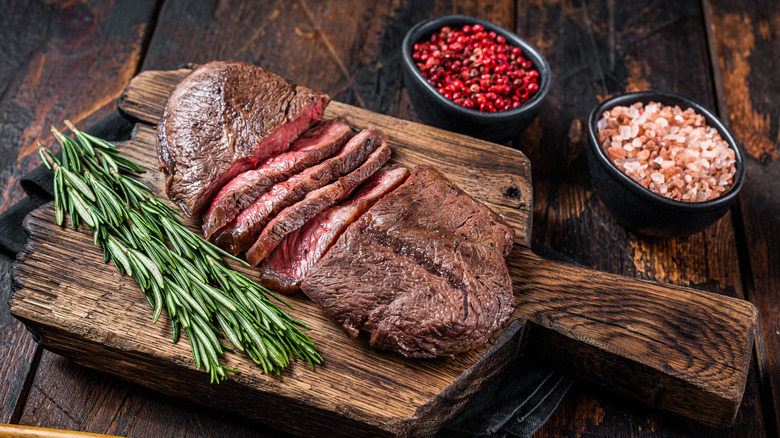What Is An 'Oyster Blade' Cut Of Steak?
Whether you're celebrating an anniversary, showing off for dinner guests, or looking for a hearty meal to fill up on after a long day, a steak cooked to perfection is a sure way to satisfy anyone's carnivorous cravings. When enjoyed in moderation, Healthline claims that beef offers a fair share of health benefits thanks to its makeup of "high-quality" protein, vitamins, and minerals, which can help boost athletic performance and reduce the risk of developing anemia.
When it comes to selecting the right cut of steak, however, the options can be a bit overwhelming. After all, the average cow does weigh over 1300 pounds, per Beef Magazine. And while you may be familiar with common beef cuts like filet mignon, chuck roast, or sirloin steak, there are some cuts that might be flying under your radar, like the oyster blade. Contrary to its name, oyster blade has nothing to do with shellfish and sharp knives. So what exactly is an 'oyster blade' cut of steak?
Oyster blade is a small, marbled cut of beef
Oyster blade is actually a marbled muscle located in the shoulder or blade of cattle (via Michelin Guide). Like any cut of beef, there are certain cooking methods best suited for preparing an oyster blade steak. Because the cut is full of moisture, typically weighs between 6 to 8 oz, and is very tender, Livestrong suggests using cooking methods that involve high heat like grilling, pan searing, or broiling to cook the perfect steak. It further recommends dicing oyster blade steak into kabobs or fajitas before you serve it.
An oyster blade cut of beef also comes with quite a bit of marbling, which is really just a euphemism for fat. Executive director of Huber's Butchery, Andre Huber, tells Michelin Guide that the fat-trimming process can be relatively tiresome.
In an interview with The AU Review, Australian butcher Doug Piper says oyster blade can be pretty tough and chewy in texture which makes it a great option for slow-cooked meals like a stew. Courtesy of the oyster blade's "forgiving" gristly texture, the connective tissue keeps the cut tender even if it's overcooked, Piper explains. This makes it perfect for amateur steak chefs.
So the next time you're looking for a small cut of beef to sear up for dinner or bulk up a stew, give oyster blade a chance. The good news, you'll also burn some extra calories trimming the marbling. And if tedious kitchen tasks aren't your thing, you can always leave the fat-trimming process to the butchers.

